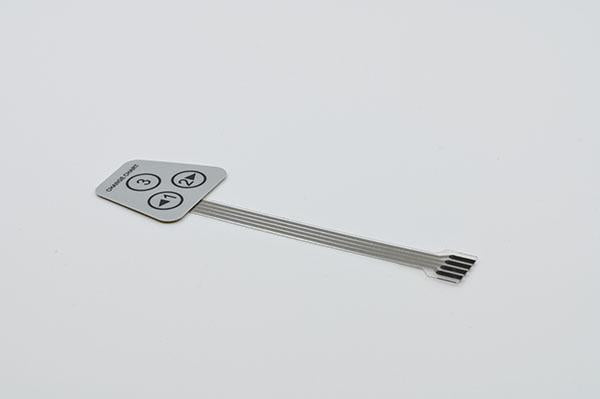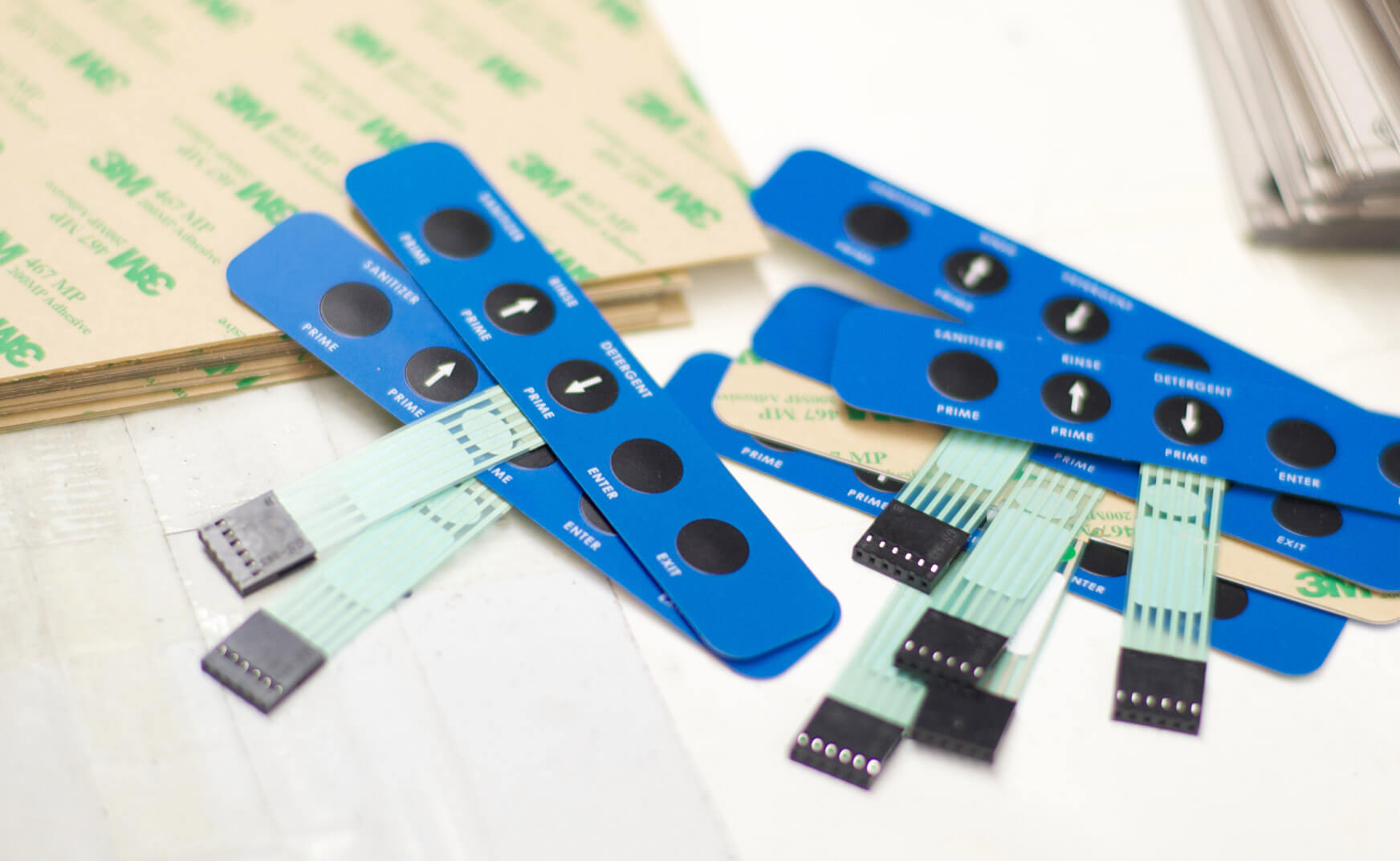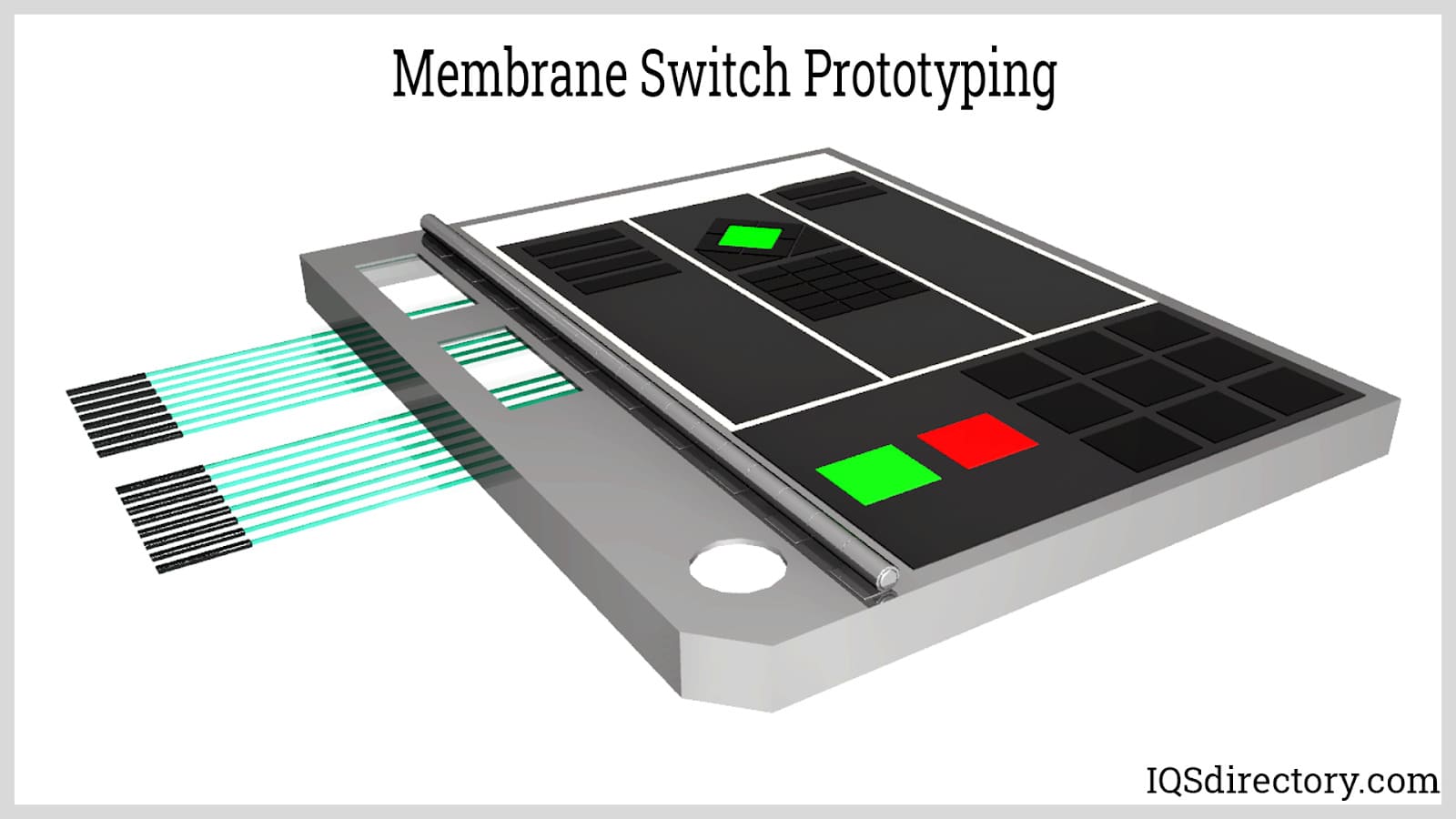Membrane Switches vs. Traditional Switches: What You Need to Know
Membrane Switches vs. Traditional Switches: What You Need to Know
Blog Article
Comprehending the Importance of Membrane Switches in Interface
Membrane switches are integral elements in the style of reliable interface, helping with not only performance but likewise enhancing visual appeal and individual communication. Their special features, such as resistance to ecological factors and adjustable designs, make them appropriate for a varied range of applications throughout multiple markets. As we explore the future trends and different benefits related to Membrane modern technology, it becomes clear that these buttons are greater than just elements; they represent a merging of technology and practicality. The ramifications of this modern technology on user experience are worth checking out further.
What Are Membrane Buttons?

The spacer layer, which contains glue buildings, permits the splitting up of the circuit layer from the overlay, making sure that the switch remains in a non-activated state till pushed. When pressure is related to the overlay, it presses the spacer layer, connecting the gap and finishing the circuit in the underlying layer. This style not only reduces the physical room required for standard mechanical switches yet likewise improves the sturdiness of the device, as Membrane buttons are normally resistant to dust, dampness, and other ecological aspects.
Typically located in applications ranging from customer electronic devices to medical tools, Membrane buttons are essential to modern-day technology, giving a straightforward and efficient user interface that lines up with modern design needs.
Advantages of Membrane Buttons
While various button innovations exist, Membrane Switches offer distinctive advantages that make them especially desirable in different applications. Among the primary advantages of Membrane buttons is their small layout, which allows for space-saving executions in devices where realty is restricted. Their slim profile not just boosts visual appeal however additionally helps with light-weight construction.
One more considerable benefit is their resistance to environmental elements. Membrane switches are generally sealed versus dampness, dust, and contaminants, making them suitable for usage popular environments, such as medical gadgets and industrial tools. This durability prolongs the life expectancy of the button, lowering upkeep costs and enhancing reliability.
Furthermore, Membrane buttons can be tailored to fulfill specific design requirements, incorporating distinct graphics and colors that improve individual interaction. Their tactile comments alternatives can additionally be customized to supply an enjoyable customer experience. In addition, Membrane buttons are economical, especially in high-volume applications, as they can be created efficiently.
Applications in Different Industries

In the consumer electronic devices market, Membrane buttons are common in devices such as microwaves, cleaning machines, and remotes. Their tactile responses and aesthetic options improve user experience while giving a smooth, modern-day look. In addition, vehicle manufacturers make use of Membrane buttons in dashboard controls and infomercial systems, where space is restricted, and user involvement is crucial.
In addition, the industrial field leverages Membrane switches in control panels for equipment and equipment, permitting for intuitive operation in commonly extreme environments. Their resistance to chemicals and dampness guarantees long life and reliability in these applications. Generally, the versatility of Membrane Switches adds significantly to their extensive usage, making them essential in numerous technical domains.
Style Factors To Consider for Membrane Switches

When designing Membrane switches, a number of crucial factors to consider must be taken into account to guarantee ideal capability and customer experience. To start with, the choice of materials is crucial; choosing long lasting, high-grade substratums can boost the button's long life and resistance to ecological variables such as dampness and temperature level variations.
Second of all, the layout of the visuals overlay must prioritize clarity and ease of usage. Symbols and text must be understandable, and the layout should promote instinctive communication (membrane switches). Furthermore, tactile responses is crucial; integrating a tactile dome or various other devices can improve the user experience by supplying physical verification of activation
An additional vital variable is the button's electrical efficiency. Designers must make certain that the conductive traces are appropriately developed to minimize resistance and stay clear of signal disturbance. This includes assessing the called for actuation force and ensuring compatibility with the digital components they will certainly interface with.

Future Patterns in Membrane Technology
As modern technology remains to breakthrough, Membrane buttons are positioned to develop dramatically, driven by developments in products and manufacturing methods. One arising trend is the consolidation of innovative materials, such as conductive inks and versatile substratums, which boost resilience and reduce the general weight of Membrane buttons. These products not just enhance the responsive response yet additionally permit the design of buttons that can hold up against harsher environmental problems.
In addition, the integration of touch-sensitive innovations is changing conventional Membrane Switches right into even more interactive customer interfaces. Capacitive touch sensors embedded within Membrane switch panels can supply an extra receptive and instinctive user experience, aligning with the growing demand reference for smooth, contemporary layouts in customer electronic devices.
In addition, advancements in printing techniques, such as digital and 3D printing, enable rapid prototyping and customization of see it here Membrane buttons. This adaptability enables producers to react faster to market needs and customer choices.
Finally, sustainability is ending up being a considerable focus, with producers exploring environmentally friendly materials and processes. As these fads unfold, the future of Membrane technology promises boosted capability, visual charm, and environmental responsibility, strengthening their duty in sophisticated interface across numerous sectors.
Final Thought
In conclusion, Membrane Switches represent an essential part in the layout of individual interfaces, integrating functionality with visual versatility. Their advantages, consisting of toughness and resistance to environmental factors, make them ideal for diverse applications throughout various sectors. Thoughtful style factors to consider improve user communication and experience. As developments in modern technology continue, the evolution of Membrane buttons is anticipated to additional improve interface, driving innovation and boosting usability in a significantly complex technical landscape.
Membrane buttons are indispensable components in the style of reliable user interfaces, helping with not just capability but likewise improving visual allure and user interaction.Membrane Switches offer as an essential component in different individual interfaces, promoting a smooth communication between users and electronic gadgets.While many button technologies exist, Membrane Switches offer unique advantages that make them especially preferable in different applications.In addition, Membrane buttons can be tailored to fulfill specific design requirements, incorporating one-of-a-kind graphics and shades that enhance user communication.In conclusion, Membrane Switches represent a vital element in the style of individual interfaces, integrating performance with visual versatility.
Report this page